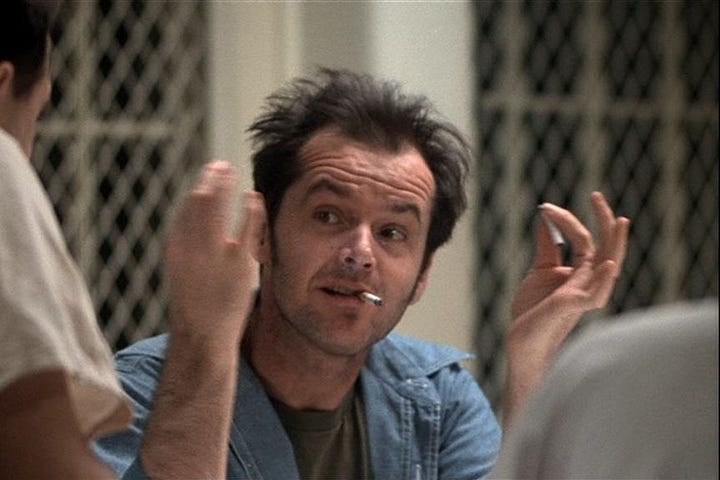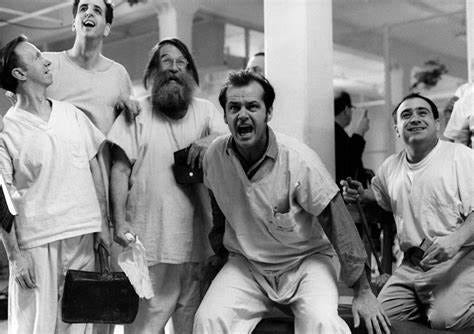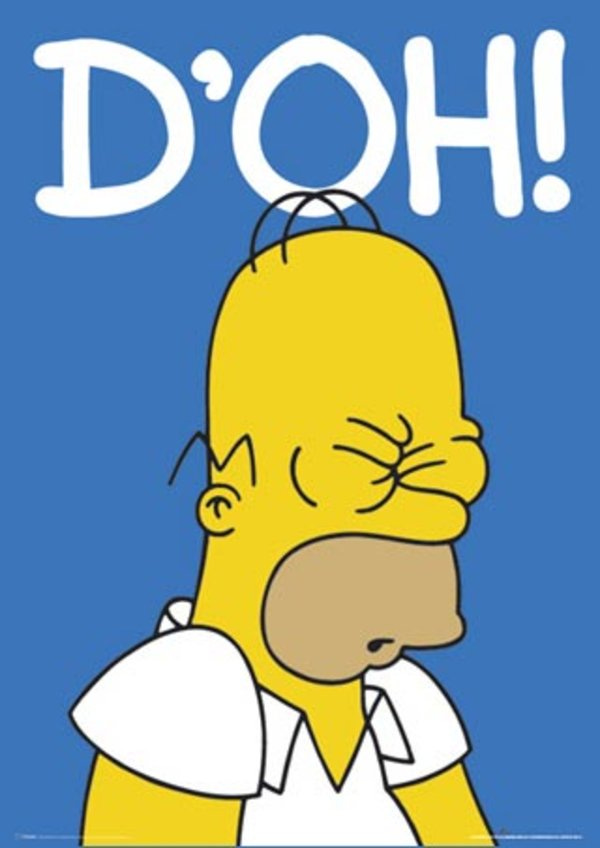The classic comedic line has been variously credited to W.C. Fields, Dorothy Parker, radio wit Fred Allen, or more recently musician Tom Waits. Regardless of its origin, the line has stood the test of time. At first glance the answer is obvious—as if this was actually a serious question posed—which it isn’t. But upon deeper reflection, which is a concept forced on me (granted to me?) as a result of my recovery from drugs and alcohol, it isn’t as easy a question to answer as one might think. OK the above is a mouthful. I grant you that.
Who wouldn’t rather have a bottle in front of them than go through a frontal lobotomy? Well—the short answer is alcoholics. To those of us who drink, or formerly drank alcoholically, a bottle in front of us means that we’re on a proven and predictable path. What awaits is one of three outcomes: a morgue, a hospital, or a prison. That may sound dramatic to those of you “normies” reading this. History shows very little variation on the theme—drinking excessively will kill you quickly or slowly, and there’s a good chance it will kill others who cross your path along the way.
Let’s take a careful gander at the alternative choice—a frontal lobotomy. Whoa. Holes drilled into your forehead. Part of your brain removed or maybe just neatly trimmed. Often, to make matters even more horrible, malarial blood was injected into the brain to induce fever. The procedure, known in scientific circles as a leucotomy, was used throughout the late 19th century until the mid-20th century to quiet patients who were deemed hopelessly insane. It involves a surgical procedure to sever the connections to and from the pre-frontal cortex of the brain. “Nurse, hand me that saw. This’ll shut ‘em up.”
The originator of the procedure, Portuguese neurologist Antonio Egas Moniz, actually shared the Nobel Prize for Physiology or Medicine in 1949 for the discovery of the therapeutic value of leucotomy in certain psychoses. Just seventy-five years ago. Use of the procedure increased in the 40s and 50s and estimates put the number at over 40,000 patients that were lobotomized. Many gay men were subjected to the treatment to cure their behavior which was deemed as insane. More women were lobotomized than men. Thankfully the use of the procedure began to fall off in the late 50s. There were still isolated cases as recently as the 1980s in France. Obviously, there was pushback in the medical community to this scientific theory being applied in a surgical practice. The connections between brain physiology and uncontrollable cognitive behavior were tenuous at best.
Hmm—not sure we can call that a cure
Results of the operation were mixed. Patients died. Patients were generally reported to be left emotionally blunted. Responsiveness, self-awareness, and self-control were diminished. A well-known and cruel use of lobotomy was featured in Ken Kesey’s famous 1963 novel and subsequent movie “One Flew Over the Cuckoo’s Nest.” The film won all five major Academy Awards and is largely regarded as one of the 25 greatest films made. In the brutal, yet humorous expose of mental health care, lobotomies are weaponized by Nurse Mildred Ratched (played by Louise Fletcher; Best Actress in Lead Role) and her staff to keep unruly patients under their control. The film’s sad ending is when Randle McMurphy (Jack Nicholson; Best Actor in Lead Role) is lobotomized as a punishment for his revolt against the staff.


Other literary and cinematic representations have famously represented characters undergoing lobotomies. “Frances” starring Best Actress nominee Jessica Lange depicting actress Frances Farmer. Tennessee Williams 1958 play “Suddenly Last Summer” focused on the use of lobotomies to render homosexuals as “morally sane.” Robert Penn Warren’s 1946 novel “All the King’s Men” describes using a lobotomy to “tame” a Comanche warrior. Even more recently, Jeff Goldblum portrayed controversial physician Walter Jackson Freeman, who performed as many as 4,000 lobotomy procedures, in 1950’s middle America in the 2018 film “The Mountain.”
Emotionally blunted. Hmmm. Isn’t that exactly what we’re seeking when we drink or drug to oblivion?
Much of the focus in long-term recovery from addiction is an attempt at bringing a person’s feelings back to the surface. A recovering addict will slowly regain the highs and lows brought about naturally by their own dopamine receptors—but not after a reasonable period of time allowing the brain to rebuild those connections organically. Substances have been doing (overdoing it) for them for a long time. My own experience parallels this. When the highs and lows have been chemically powered for so long, it takes a while to get ‘em back naturally. Eventually it comes. And then we’re faced with the prospect of being the highly sensitive individual that we are—but without the blunting relief of our substance of choice.
Many of my addict and alcoholic friends have reported that the process of getting clean and sober was a bit like having a lobotomy. All of the narratives, behaviors, conflicting self-beliefs, and amygdala-driven choices are removed. What are you left with? Someone you don’t know very well or haven’t even been introduced to. But it is thankfully a temporary state. Training and counsel in early sobriety get reduced to such a simple level. Don’t pick up. Do the next right thing. First thought—wrong. Find your feelings. Be honest. Don’t pick up. But we do rise up with time and can get in touch with our feelings and our behaviors in a deep and profound way if we stay the course.
Are you insane when you’re drunk or high? I’ll leave that to experts, although I’m not sure I trust that many of them in today’s culture. The current definition of insanity according to Websters: a severely disordered state of the mind usually occurring as a specific disorder. Okay—so many treatment professionals now prefer the term “substance use disorder” to addiction. Hmm—disordered state of mind occurring as a result of a disorder.
We’ve all heard and likely used the modern pop version. The definition of insanity is doing the same thing over and over and expecting a different result. I personally despise that phrase because to me it stinks of a cop-out. Of denial. Of not taking responsibility for the consequences of our actions. Have I done it? Sure. Used it in sentences? I just did. But I hate it.
Are you capable of doing insane things when you’re drunk or high? No doubt. Prisons are evidence of those bad choices. Were the people that were lobotomized during the dark days of psychiatric surgery in 20th century insane? Maybe. Was it a legitimate decision to remove part of their brain to render them “manageable?” History has shown that it was not.
Science and medicine have always struggled to understand the brain. We are making incredible strides, but we still don’t understand mental illness or addiction. Are today’s psychiatric doctors any less culpable for their actions as pharmaceutical dealers than were the lobotomists of yesteryear?
Most of the advice I got from doctors about my drinking was wrong. Until I met Dr. Harry Haroutunian at The Betty Ford Center. He now has his own practice continuing to help many people. His calm, intelligent way of explaining the connection between my poisoned brain chemistry and my behavior broke through. I will always be grateful.
I’m sure glad he didn’t have a skull saw when he met me.







Beautifully written and argued. I largely agree.
My one potential uncertainty was this: “Many of my addict and alcoholic friends have reported that the process of getting clean and sober was a bit like having a lobotomy. All of the narratives, behaviors, conflicting self-beliefs, and amygdala-driven choices are removed. What are you left with? Someone you don’t know very well or haven’t even been introduced to.”
I’m not sure. Isn’t it the reverse? When we’re in our addiction, to me that’s the lobotomy state. When we get clean/sober, that feels like the freedom, exiting the lobotomized state. We go from dulling/denying our emotions to suddenly vividly feeling everything. Am I wrong?
Thanks for the solid read 👌
A very well written article about one small saying! Well done Dee.